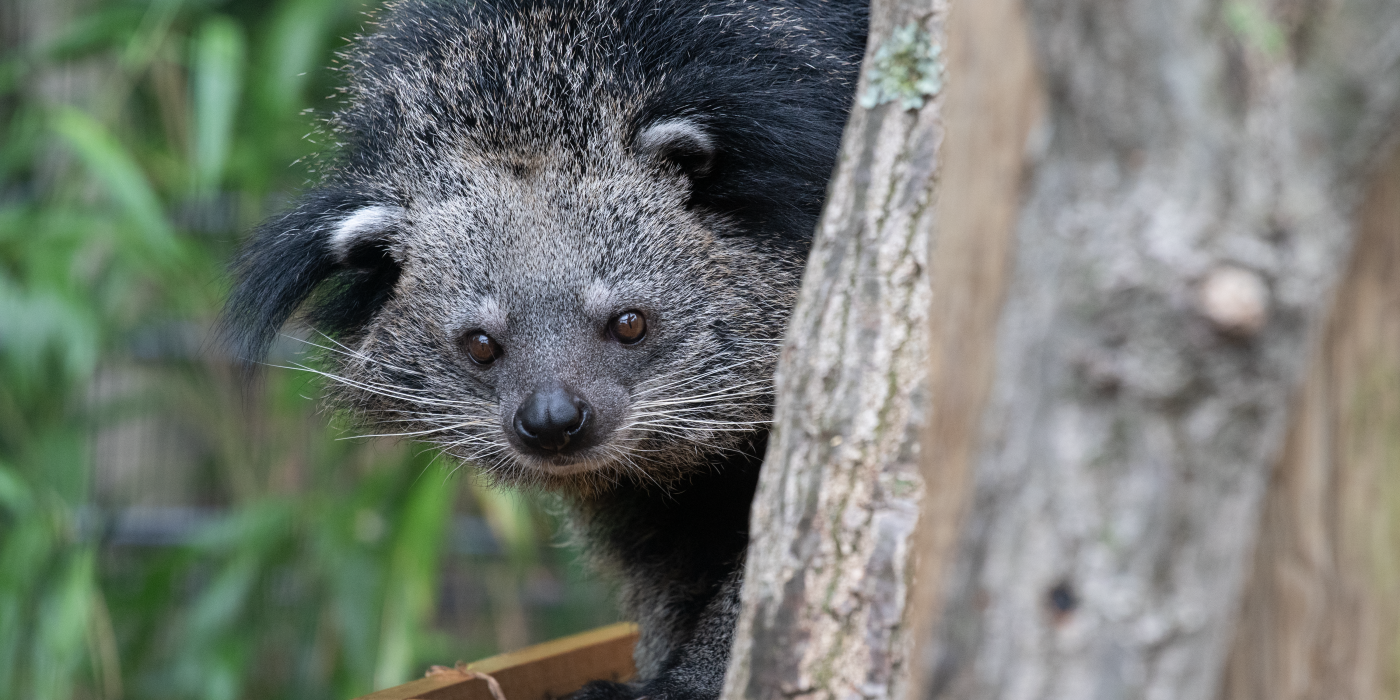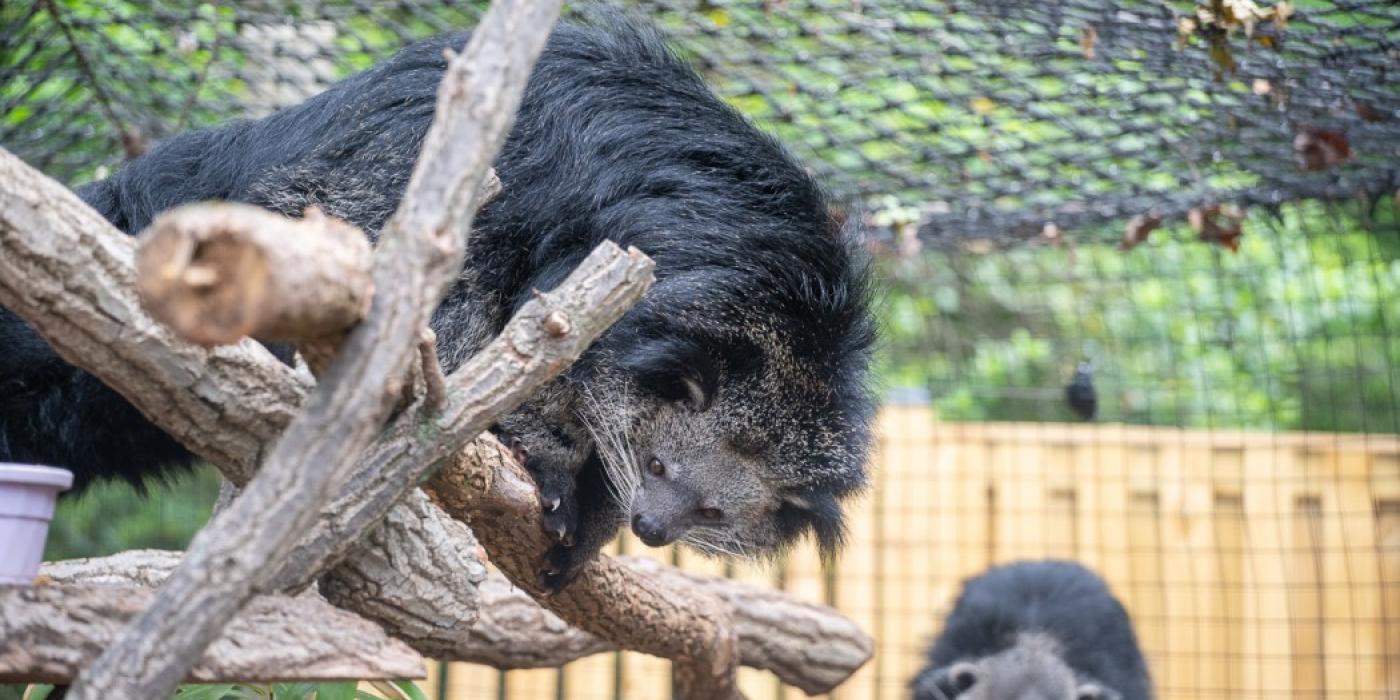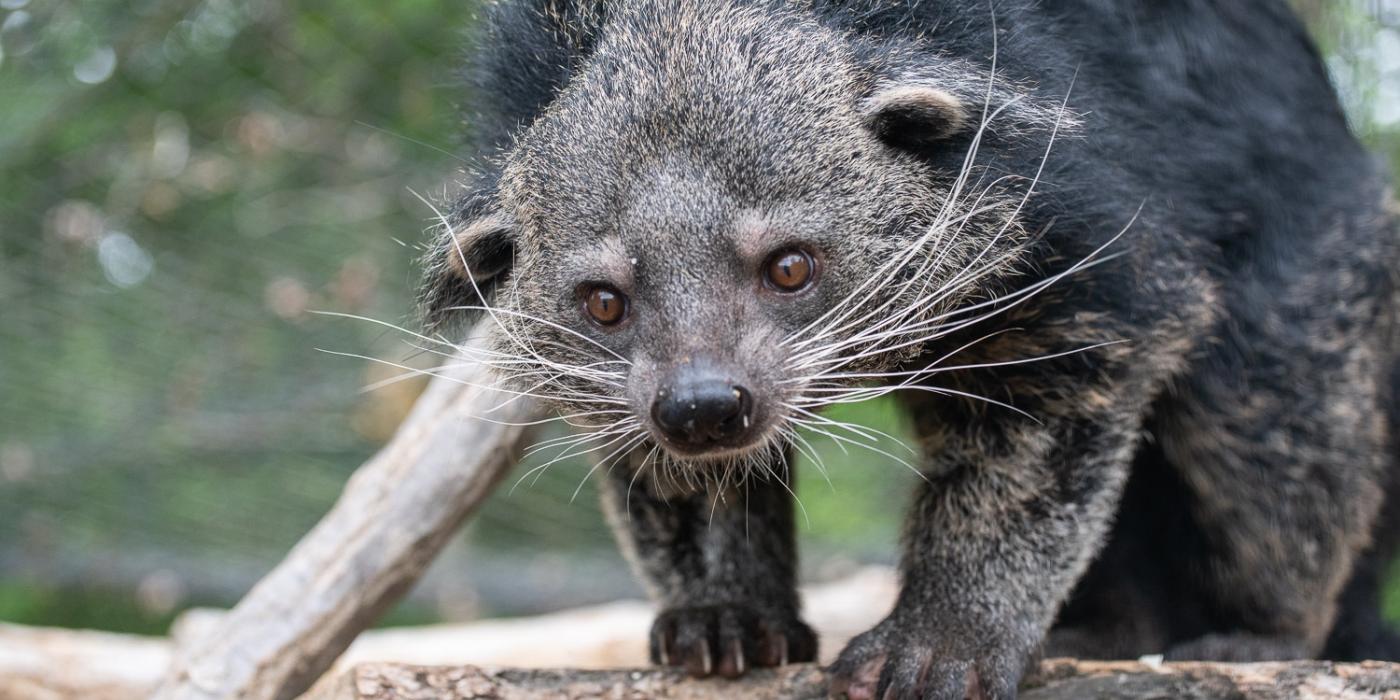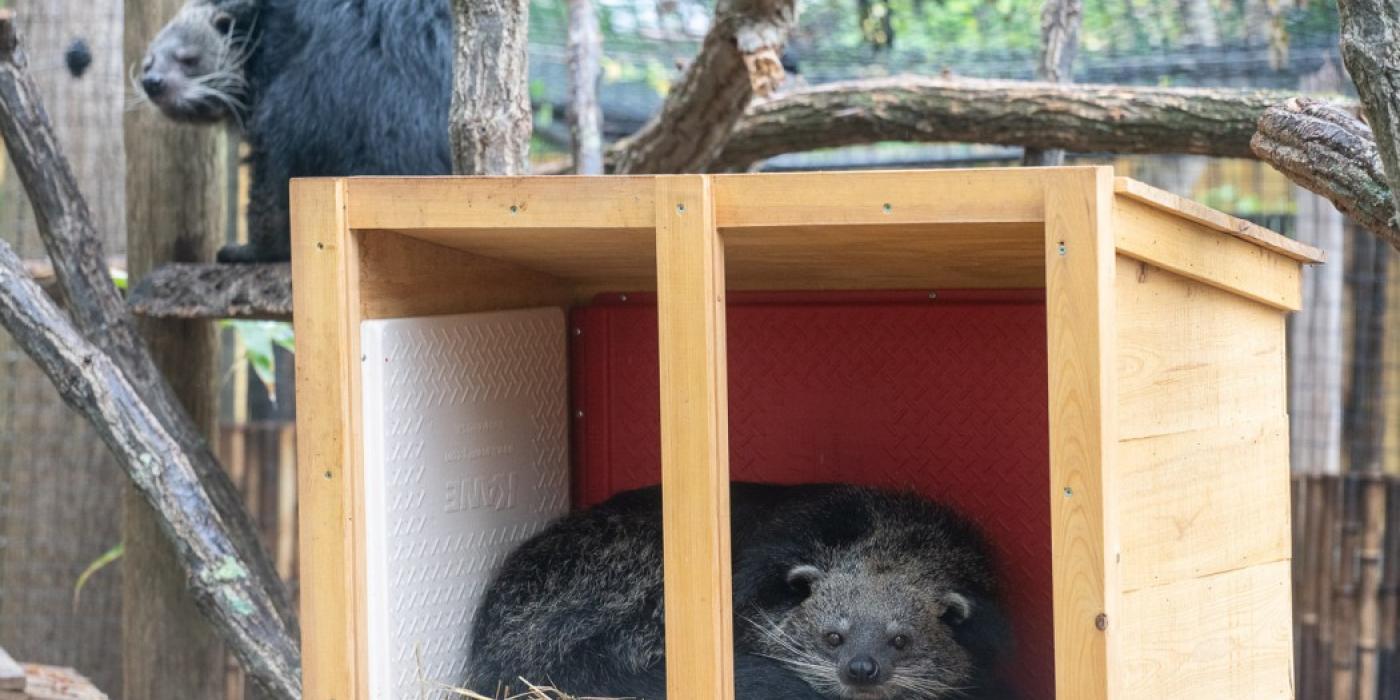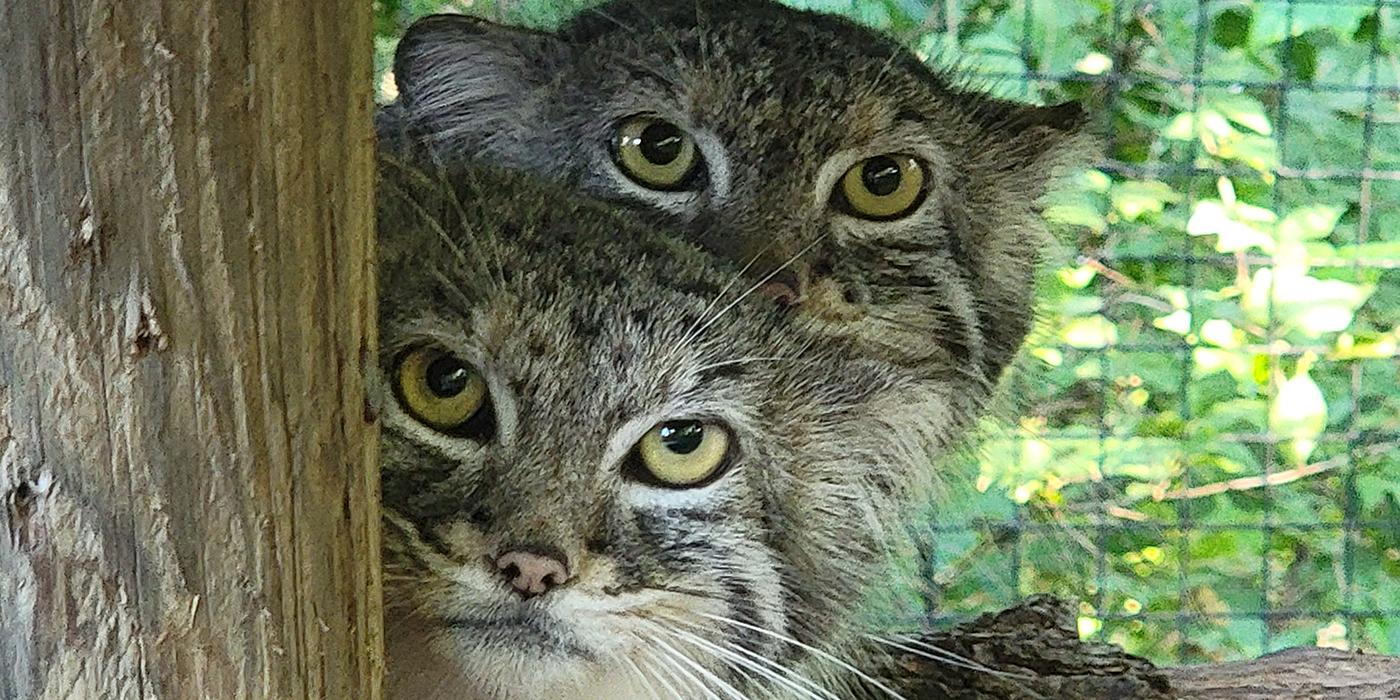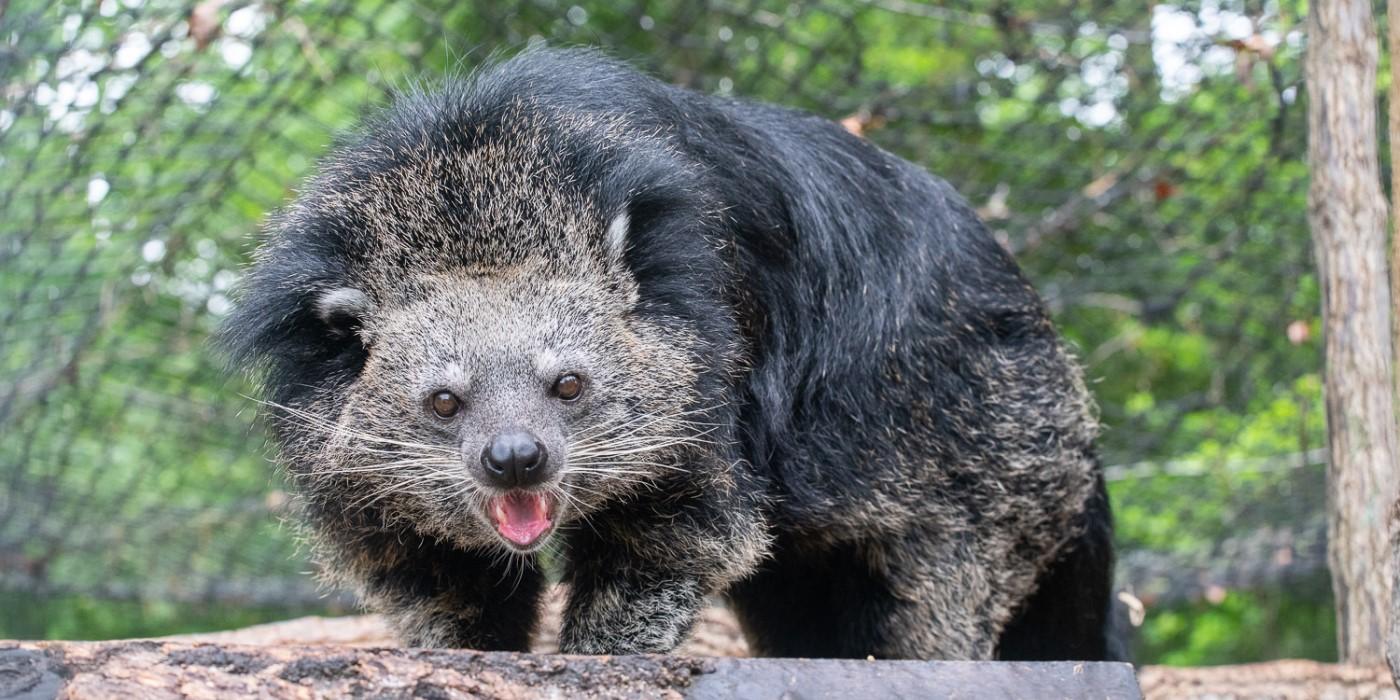Meet Our “Buttery” Binturongs and Cool Pallas’s Cats
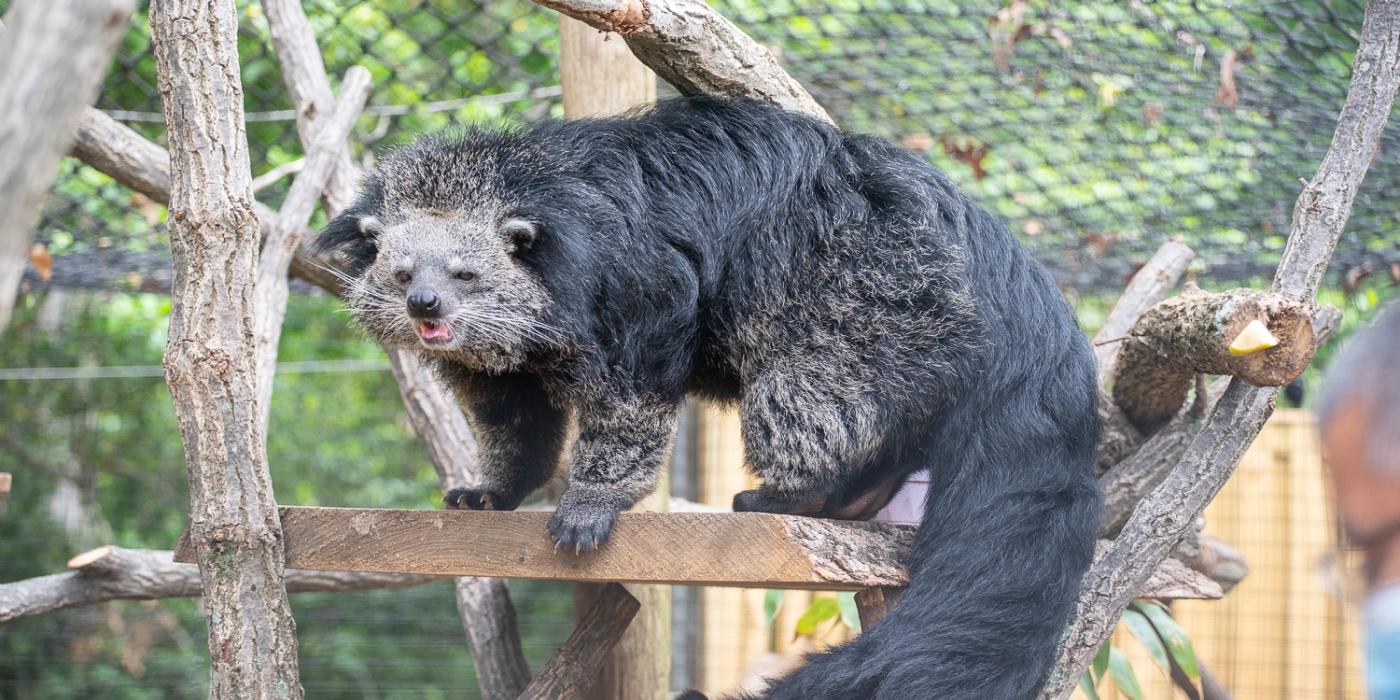
Put your senses to the test at the Claws and Paws Pathway, the newest exhibit at the Smithsonian’s National Zoo and Conservation Biology Institute. Follow your nose to the binturongs, who smell like buttered popcorn, and keep your eyes peeled for petite Pallas’s cats hiding in plain sight. Get the scoop on the Zoo’s newest residents from curator Craig Saffoe.
Meet Binturongs Hank and Lola
Lay eyes on a binturong, and you’ll understand exactly how this species got its nickname: the “bear cat.” Their stocky body—which is covered in a bouffant of black hair— resembles a bear’s robust frame, while their large brown eyes and wily whiskers give them a whimsical, cat-like appearance. Funnily enough, they are neither bears nor cats, but are instead members of the Viverridae family.
You may smell our binturongs, Hank and Lola, before you see them. That’s because a chemical in their urine smells just like buttered popcorn. Being around them makes me feel like I’m in a movie theater!
For a creature with such an alluring aroma, it is no wonder that one of Hank and Lola’s favorite pastimes is sniffing out new smells. Behaviorally, binturongs are a lot like dogs—they are smart, trainable and awfully cute! Hank—the smaller of the two—is an attention hound. At 11 years old, he’s super social and seems just as interested in our team members as we are in him. He’s just plain fun to be around.
Hank is usually the first to investigate something new, whereas 9-year-old Lola enjoys exploring at her own pace. When it comes to interacting with keepers, she can be a bit standoffish and makes it clear, in no uncertain terms, where her boundaries lie. The trick is to stay cool and give her some space.
The pair have been together for years, but they have never reproduced. We are not expecting them to breed and produce offspring here, but we are ready for the possibility that they may!
In creating their habitat, we gave Hank and Lola plenty of perching to encourage them to climb. This species spends a lot of time in trees, so much so that their tail has adapted into a kind of fifth limb. They use that tail—which is as long as their body—to help keep their balance. Often, they wrap it around tree branches and use it to lower themselves to the limbs below. If you are lucky enough to catch them in action, take a moment to watch how they use their tails to navigate the high spaces!
Meet Pallas’s Cats Akar and Ceba
Pallas’s cats may have a permanent “resting grump face,” but behind this sassy exterior is a feline that is full of personality. Sisters Akar and Ceba, who are two years old, are quintessential cats. In the presence of people, they are very independent and seem content to be left alone. However, when they think no one is watching, they are just as playful as your housecat. Getting to know the cats’ personalities—as well as their likes and dislikes—is a fun and rewarding challenge!
Akar and Ceba look nearly identical. One of the few differences is Akar’s coat is a little lighter than Ceba’s. To tell who’s who, we rely more on their personalities. Akar is the bolder of the two and is more likely to explore out in the open. Ceba, on the other hand, is a hider among hiders!
One of the reasons they are so successful at hiding is their small stature. Pallas’s cats are tiny. Akar and Ceba are full-grown, yet they only weigh about 6.5 pounds each. Of the 37 widely accepted cat species, Pallas’s cats are among the top 10 smallest felines in the world.
In the wild, Pallas’ cats’ range spans from Iraq and Afghanistan to Nepal and Mongolia. They thrive in rocky terrain and are adept at blending in with rocks and shadows.
Both Akar and Ceba are very shy and elusive, but we have designed the exhibit in such a way that allows them to hide in plain sight. The sisters get along very well and can usually be seen huddled together. One of the coolest things about these cats is how they slink away—almost in slow motion—until it’s time to run!
No matter who you encounter at the Claws and Paws Pathway—binturongs or bobcats, porcupines or Pallas’s cats—I hope that these animals capture your heart and imagination. Part of what makes this exhibit so special is that it introduces our visitors to animals they may have never heard of or seen in person before. We hope getting a close-up look at these creatures inspires them to learn more about the natural world they never knew existed.
This story appears in the June 2022 issue of National Zoo News.

